Workplace Communication Styles & Strategies to Improve Team Communication
Mastering workplace communication styles and strategies is key to building strong teams, fostering collaboration, and improving productivity. From digital tools to in-person interactions, learn how to create a communication culture that keeps employees engaged and aligned.
On this page
Good communication can be just as stimulating as coffee. And just like coffee, there are different brews of workplace communication styles—each with its own distinct flavor and impact. Understanding communication styles in the workplace helps teams collaborate better, resolve conflicts efficiently, and drive business success.
A quick look at legendary leaders and CXOs—and how they interact with their world—offers an exciting glimpse into different types of communication styles and their real-world impact.
Take Jeff Bezos, for example. Before each meeting, the Amazon Hulk meticulously reads exactly six pages of a memo in silence, an intense focus session that may seem unsettling to new hires. Bill Gates has a more animated approach—rocking his chair during discussions, with the speed and intensity of the motion serving as a direct indicator of his engagement level.
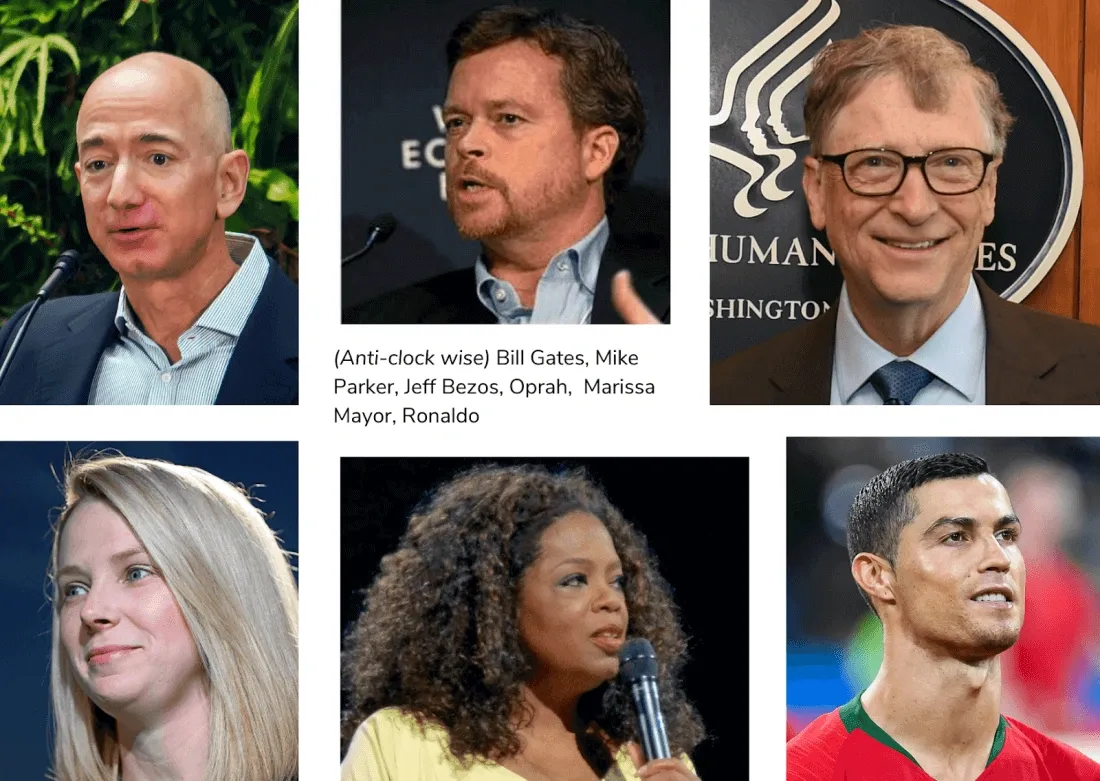
Then there’s Mike Parker, CEO of Nike, who balances structure and creativity by dividing his notebook into two halves—one for notes, the other for doodles. Oprah Winfrey’s communication style, on the other hand, is built on deep personal connections, engaging her audience with warmth and genuine curiosity.
Marissa Mayer, former CEO of Yahoo, prioritizes structured interactions, personally meeting and approving every new hire. Meanwhile, on the football field, Cristiano Ronaldo’s iconic goatee scratch after scoring big goals communicates a bold message—his unspoken claim to being the greatest of all time.
These leaders have mastered their communication styles in the workplace, using distinct approaches that align with their personalities and leadership philosophies. Whether through structured briefings, energetic interactions, or personal engagement, the way we communicate shapes our professional influence.
Understanding the types of communication styles can help individuals and teams find their voice, enhance collaboration, and create a workplace where ideas flow freely.
Leadership communication styles at the workplace
Here are the examples of leadership communication styles that one must definitely know:
1. Be you. Be Communicating.
What each of these folks is doing – even if they may not be speaking or writing per se - is communicating by following his or her ‘signature template’ of vibe-ing with the environment through a mix of indicators, body language, and habits.
And each of these techniques is so effective because they are not trying to fit into a mold or ‘industry best practice of communication,’ despite simply trying to reach out spontaneously and genuinely to the other side.
They are just themselves – unabashedly and unapologetically. Their sincerity comes across in their spontaneity, and their personality leaves a lingering mark in our consciousness.
2. Communicate. Engage. Redo.
Communication is central to engaging the mind and soul, whether at home or the workplace. So, what lessons do these leaders leave for us? How do we replicate their spark in our own life?
The answer is almost insanely logical and delightfully simple. If these leaders have become legends by refusing to succumb to trends and daring to be themselves (and stay that way even when eyebrows are raised or eyeballs are rolled), then that is precisely what we should do, too.
After all, our message is sharpest, clearest, and loudest when authentic. There are a few better ways to stay engaged and engage others – be it teammates, partners, or clients. This case is relevant whether you're leading virtual teams or meeting with clients in real life.
Types of communication styles in the workplace
To be yourself, you must know who you are. Like everything else in life, context helps build content.
So, before you unlock the engaging powers of communication at the workplace, it will help to figure out your communication personality first so that you can map your way forward while keeping things loose and ‘in-the-moment’.
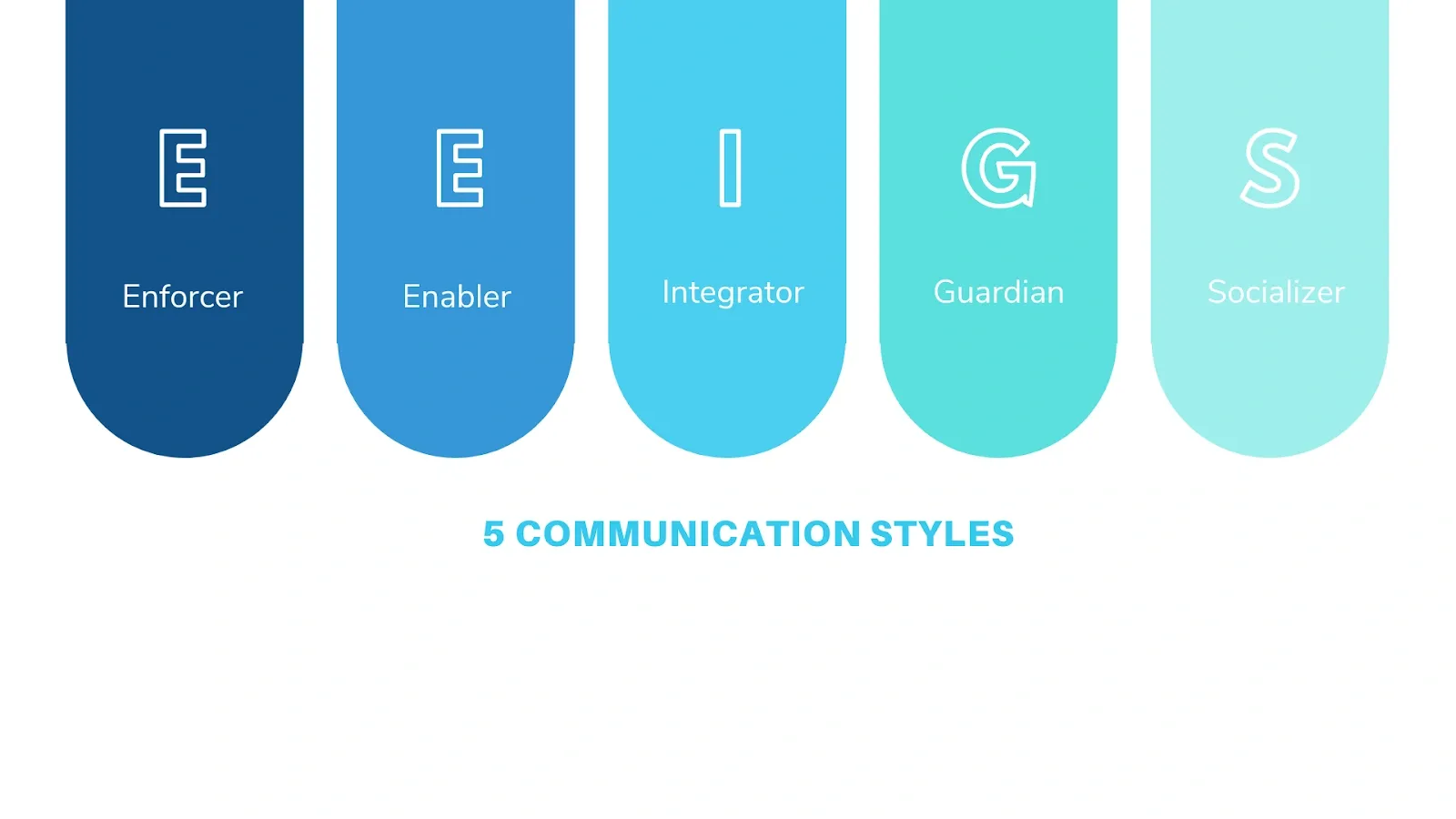
1. Are you an Enforcer?
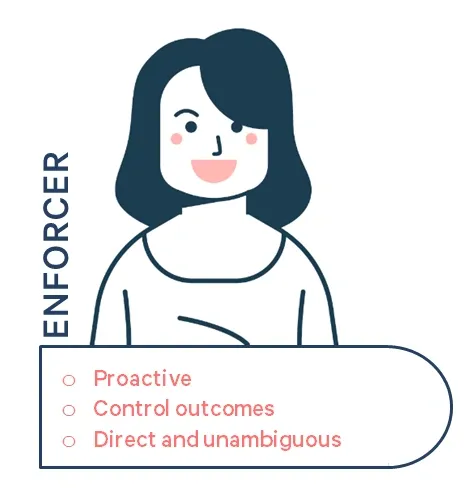
These are proactive personalities who believe in taking charge of situations. They will set the tone, shape the narrative, and control the outcome. Their preferred communication style is usually shorn of embellishments, refreshingly direct and deliberately unambiguous. These are folks who mean business and don’t mince words.
While this ‘Napoleon-esque,’ leading-the-battlefield-from-the-front style can be a magnetic trait to possess and often inspire and stir an entire team to action, it is also an approach that can trample upon territories at times or ruffle a feather or two.
The trick here is to put oneself in the other’s shoes which can balance the equation by cranking up the empathy quotient, helping the enforcer see both sides of reality with clarity, and become a more well-rounded and mature communicator.
2. Are you an Enabler?
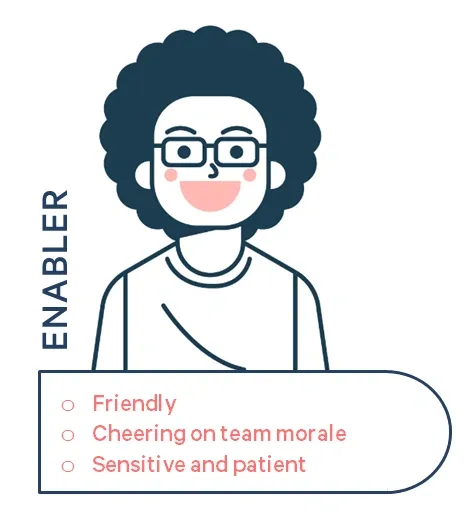
This is the friendliest tribe in the workplace (or outside of it). These are folks who are always championing the underdog, adopting a new idea, or generally cheering on the team morale – in a not-really-conscious way to enable desired outcomes. Expect plenty of Thumbs-ups, Victory signs, and pats-on-the-back from this group.
When it comes to communication, they are sensitive, patient, and accommodating, with a presence to grow on you. While this is an obvious asset, it isn’t without its flipside.
Left to their own devices, folks in this sub-set may sometimes appear too nosey or intrusive. They may even run the risk of ignoring their duties by devoting an excessive amount of time fixing others’ fires.
Finally, as a sensitive type, they are also prone to heartbreak when their positivity goes unanswered or ignored. Enablers are folks who need to continuously draw boundaries and make it a point to prioritize their KRA’s while keeping their inner glow going.
3. Are you an Integrator?
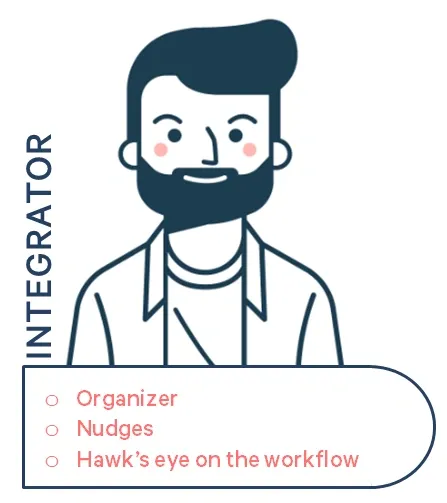
Say Hello! To the ‘Natural Born Delivery-Leads’ of your universe. Integrators make for excellent event organizers and project managers, holding the flock together and ensuring every nut and bolt of the jigsaw works to clock precision.
In terms of interaction with workers, here is a seasoned breed with a fine mastery over psychology that knows precisely how and when to nudge and poke along, controlling team morale (and performance, by extension) at will and orchestrating the show with the finesse of an orchestra conductor.
While their personality can range from reserved to gregarious to anything in between, in terms of communication, they may go for a measured approach – preferring to keep a hawk’s eye on the workflow (and save vocal energy for crunch situations) instead.
As a tip, this type must remember that the ship – manned as it is with talented souls - is capable of taking care of itself, and so it is perfectly ok to ‘let go’ and chill once in a while.
4. Are you a Guardian?
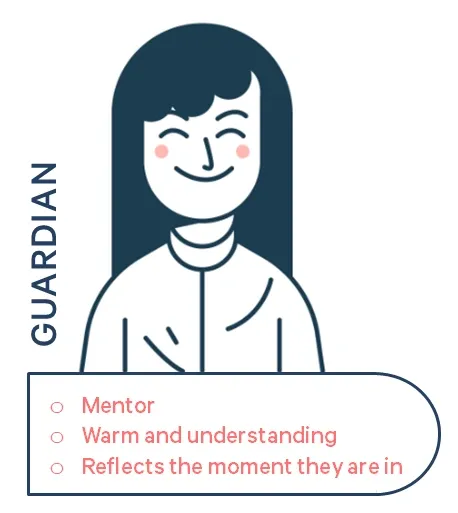
Shepherd, agony aunt-uncle and philosopher rolled into one, here lies the mentor and protector of the team (yes, nearly every team has one, at least in spirit). They will tend to be a bit on the senior side - with a load of experience as a treasure trove to dig out pearls of wisdom when it’s time to play the bonafide/pro-bono confidant, but frankly, this is a rule with plenty of exceptions.
Guardians tend to be warm, understanding, and mature – and generally have (or make) time for you. The reverse is equally valid, and you will come across those who have ‘crossed over to the dark side’ (to borrow a phrase from Star Wars), turning into draconian taskmasters and oppressive despots.
In their defense, they will say (and probably believe it deep down, too) that they are merely doing it for the good of the brood and protecting their cause.
At their avuncular best, however, Guardians can have a calming and rejuvenating effect on the team that’s truly precious. Their communication technique - as all great forms of communication are - tends to reflect who they are and the moment they are in comforting, censuring, or inspiring, according to the company at hand.
5. Are you a Socialiser?
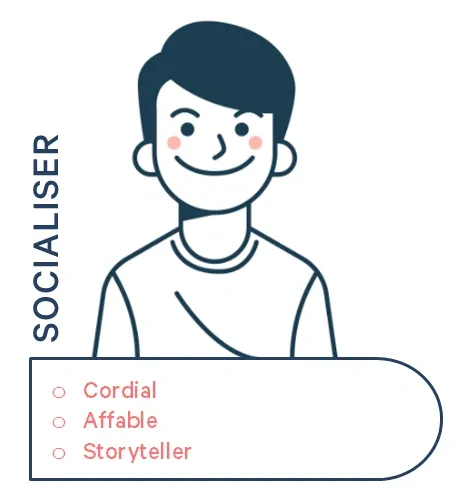
This bunch is the life of the party, and we all know our workplaces - albeit digitally distanced - need to party, perhaps more than ever, to stay happy and sane. Cordial, generous, and outgoing, the Socializers can often be the glue holding the team mojo together, spreading the sunshine of joy and thrill we all need to get by our routines.
With their colorful nature often finding its way into their behavior and speech, this is a group that will regale you with their unique storytelling style and fires you up with their infectious positivity.
If one were to nitpick, one could probably say that Socializers, like Enablers, have a ‘thing’ for overstepping their boundaries and barge into personal spaces (without meaning), given their naturally extroverted genes.
That said, the latter remains a priceless quality for any organization, especially when change – and with it, confusion and ambiguity - seems to be the flavor of every season.
Amplifying workplace communication: 12 strategies that work
Workplace communication thrives on structure, rhythm, and seamless coordination like a finely tuned orchestra. From fostering real-time collaboration to bridging leadership-employee gaps, businesses today rely on innovative communication strategies to keep teams aligned, engaged, and thriving.
Let’s dive into some game-changing approaches that redefine how teams connect and interact.
1. Powering up with collaborative communication platforms
Modern workspaces are buzzing with rapid conversations, shared files, and endless tasks. The antidote to scattered communication? Collaborative communication platforms that unify chat, video calls, file sharing, and project management in one seamless ecosystem.
These digital spaces act as the virtual command center for teamwork, keeping everyone on the same page without endless email threads or lost messages.
📕 For instance:
- Slack organizes discussions into topic-based channels, integrates with countless third-party apps, and simplifies workflows. Dropbox uses Slack to connect teams across time zones, ensuring instant updates and real-time collaboration.
- Microsoft Teams merges chat, video calls, and file sharing into a single interface. Accenture, a global powerhouse, relies on Teams to synchronize communication across its vast network, driving higher efficiency and streamlined teamwork.
With the right platform in place, communication bottlenecks become a thing of the past, paving the way for smarter, faster, and more transparent work interactions.
2. Holding town hall meetings: Where leadership meets the workforce
A thriving workplace is built on transparency and shared purpose. Town hall meetings provide a stage where leaders and employees engage in open dialogue—sharing updates, celebrating wins, and addressing concerns in real-time.
These forums dismantle hierarchies, offering employees direct access to leadership while ensuring that company goals resonate at every level.
📕 Take inspiration from:
- Facebook, where Mark Zuckerberg holds regular town halls, fielding unfiltered questions from employees. This practice embeds openness and alignment into the company’s DNA.
- General Electric (GE) hosts town halls where leaders discuss business strategy, challenges, and performance updates—reinforcing trust and team cohesion.
Town halls aren’t just meetings; they’re culture-builders that turn corporate communication into a two-way street—one where voices from every level of the organization are heard and valued.
3. Implementing a peer feedback system: Elevating growth through recognition
Feedback isn’t just a performance metric—it’s a catalyst for learning, collaboration, and personal growth. A well-structured peer feedback system encourages employees to acknowledge each other’s contributions, fostering a workplace culture rooted in appreciation and improvement.
When employees give and receive feedback from their peers, it breaks down silos and creates an environment where constructive insights fuel professional development.
📕 Who’s doing it right?
- Google’s “Peer Bonuses” system allows employees to nominate colleagues for bonuses when they go above and beyond. Whether it’s lending expertise or offering support outside their role, this initiative cultivates collaboration and mutual appreciation.
- LinkedIn integrates peer feedback into performance reviews, ensuring employees get a 360-degree perspective on their strengths and areas of growth. This system nurtures continuous improvement and meaningful workplace connections.
In a workplace where recognition and feedback flow organically, employees don’t just perform—they thrive.
4. Digital suggestion boxes: Turning ideas into action
The classic suggestion box has evolved. Today’s digital platforms amplify employee voices by offering a real-time, interactive space where ideas aren’t just submitted—they’re voted on, discussed, and refined.
These platforms encourage innovation, boost engagement, and create an open culture where employees feel empowered to contribute beyond their job roles.
📕 Who’s doing it right?
- Adobe’s "Kickbox" initiative hands employees a structured innovation kit packed with tools, best practices, and a step-by-step process to experiment with ideas. If an idea gains traction, leadership steps in to explore its full potential. The result? A workplace buzzing with creativity and employee-driven solutions.
- Whirlpool’s innovation portal allows employees worldwide to submit, vote on, and refine ideas. The most promising concepts get developed into real products—proving that open communication isn’t just good for engagement, it’s good for business.
A workplace that listens to its employees doesn’t just retain talent—it builds a culture of innovation, transparency, and growth.
5. Cross-departmental team building: Breaking the silos
Silos can be the silent killer of workplace collaboration. When teams stay confined to their departments, knowledge stays locked in, and company-wide goals get lost in translation.
Cross-departmental team-building activities dismantle these walls, fostering relationships across teams and creating a workplace where everyone moves forward together.
📕 The innovators:
- Spotify’s “guilds and chapters” model ensures knowledge flows beyond department lines. While squads handle specific projects, guilds bring together like-minded employees across teams to share expertise and best practices.
- Zappos thrives on culture-first engagement. From company-wide social events to interdepartmental meetups, they build relationships beyond job roles, making communication second nature.
When employees understand how different teams work, collaboration happens faster, problem-solving becomes more creative, and company-wide unity strengthens.
6. Reverse mentorship: Flipping the script on learning
Mentorship has traditionally been a one-way street—senior employees passing down wisdom to junior staff. But reverse mentorship turns that model on its head, giving younger employees the chance to teach senior leaders about emerging trends, digital tools, and evolving workplace dynamics.
This approach bridges generational gaps, modernizes leadership perspectives, and strengthens internal communication across experience levels.
📕 Game-changers in action:
- General Motors (GM) pairs younger employees with senior executives, giving leadership a crash course in new technologies and digital trends. The result? A more informed leadership team that stays ahead of the curve.
- Cisco’s reverse mentorship program connects senior executives with digital natives who introduce them to social media, AI, and digital communication tools. The program has been a game-changer in aligning leadership with the ever-evolving digital landscape.
When knowledge flows both ways, companies future-proof leadership, enhance collaboration and create a culture of lifelong learning.
7. Open-plan workspaces with dedicated quiet zones: The best of both worlds
Workplace design isn’t just about aesthetics—how employees interact, collaborate, and stay productive.
Open-plan spaces encourage spontaneous conversations and teamwork, but they can become a distraction without balance. That’s why the best-designed offices blend open collaboration areas with dedicated quiet zones, creating a workplace where employees choose how they work best.
📕 Smart workplace design in action:
- Pixar’s headquarters was designed to maximize random interactions. The central atrium—home to the cafeteria, mailboxes, and restrooms—encourages employees from all departments to cross paths, sparking unplanned yet valuable conversations.
- Deloitte’s Amsterdam office embraces flexible workspace design. While open collaboration areas promote teamwork, employees can also access private booths, focus zones, and quiet spaces to ensure deep work isn’t sacrificed.
The secret to an effective workspace? A balance between collaboration and focus.
8. No-email days: Cutting through the clutter
Emails may be efficient, but productivity takes a hit when inboxes become battlefields of unread messages. Constant digital chatter can lead to overload, miscommunication, and missed priorities.
The solution? "No-email days" or designated blackout periods that encourage teams to engage face-to-face, through calls, or via alternative communication platforms.
📕 Who’s setting the standard?
- Atos, a global IT company, introduced a zero-email initiative, dramatically reducing internal emails and pushing employees to embrace real-time conversations and collaboration tools. The results? Improved productivity, streamlined workflows, and a stronger culture of direct communication.
- Volkswagen tackled work-life balance by blocking after-hours emails for certain employees. Their email servers pause after shifts and resume the next day—giving employees true downtime and ensuring that work communication happens with intention, not intrusion.
When emails take a backseat, real conversations take the wheel.
9. Rotation and secondment programs: Breaking silos, building connections
Want employees to see the bigger picture? Move them around. Rotation and secondment programs shift employees between departments, roles, or even countries, promoting cross-functional collaboration, knowledge sharing, and a deep understanding of the business as a whole.
📕 Who’s leading the charge?
- Procter & Gamble (P&G) actively rotates employees across roles and functions, giving them a 360-degree perspective on company operations. This approach helps break down departmental silos and fosters seamless cross-team communication.
- HSBC, the global banking giant, practices international rotation for leadership roles, exposing employees to different markets, cultures, and best practices. The result? A workforce that communicates across borders with ease.
When teams experience different perspectives firsthand, collaboration stops being an afterthought—it becomes second nature.
10. Lunch and learn: Feeding minds while breaking barriers
Imagine grabbing a bite while gaining valuable insights from colleagues across departments. Lunch and learn sessions turn casual breaks into power-packed knowledge-sharing moments, fostering cross-team learning and open conversations in an informal setting.
📕 Who’s making it happen?
- Etsy’s "Etsy School" lets employees teach each other anything—from coding languages to crafting techniques. This initiative not only promotes personal development but strengthens workplace bonds.
- Goldman Sachs’ "Talks at GS" series brings in industry experts and internal leaders to discuss everything from financial trends to personal growth. Employees walk away inspired, informed, and better connected.
Learning doesn’t need a classroom—it just needs the right environment.
11. Walk-and-talk meetings: Unleashing ideas on the move
Why sit in a boardroom when you can talk strategy while stretching your legs? Walk-and-talk meetings swap stuffy conference rooms for open spaces, encouraging candid conversations, creative thinking, and sharper focus.
📕 Visionaries who walk the talk:
- Steve Jobs was famous for his walking meetings, believing they fueled big ideas and deep discussions. Many of Apple’s pivotal decisions were made not at a desk, but on foot.
- Mark Zuckerberg follows the same principle, conducting key meetings while walking. A relaxed setting often makes tough conversations feel more natural, leading to better brainstorming and more open dialogue.
Sometimes, the best solutions aren’t found sitting down—they’re discovered in motion.
12. Digital detox retreats: Unplugging to reconnect
In an always-on world, true connection sometimes requires a full disconnect. Digital detox retreats allow employees to step away from screens, recharge, and build stronger in-person relationships through team activities, brainstorming sessions, and face-to-face collaboration.
📕 Who’s making unplugging a priority?
- HubSpot’s annual mystery vacations take employees on digital-free trips, where the focus is on real interactions, bonding, and relaxation. The result? A refreshed team that returns with a stronger sense of unity.
- Daimler’s "Mail on Holiday" policy lets employees auto-delete emails while on vacation, ensuring they return to work without an overflowing inbox. The outcome? Healthier work-life balance and more engaged teams.
Sometimes, stepping back is the best way to move forward.
Break down communication barriers with Empuls
Effective workplace communication isn’t just about exchanging information—it’s about building connections, fostering engagement, and creating a culture where employees feel heard. This is where Empuls comes in, offering a social intranet that transforms internal communication into a seamless and engaging experience.

- Creates a central hub for communication
Empuls’ social intranet provides a single platform where employees can share updates, collaborate on projects, and stay informed—eliminating scattered emails and information silos.
- Encourages two-way communication
Unlike traditional top-down communication, Empuls allows employees to voice opinions, participate in discussions, and engage with leadership, fostering a more inclusive workplace.
- Promotes recognition and feedback
Workplace communication isn’t just about tasks—it’s about building relationships. Empuls enables peer-to-peer recognition and structured feedback, ensuring that employees feel valued and appreciated.
- Enhances engagement through social interactions
With features like interactive posts, polls, and surveys, Empuls makes internal communication more dynamic, encouraging employees to participate actively rather than passively consume information.
- Streamlines company-wide announcements
Empuls ensures important updates reach the right employees at the right time, reducing miscommunication and ensuring team alignment.
Integrating Empuls into your workplace can refine communication strategies, strengthen team collaboration, and create a more engaged workforce.
Conclusion
No matter what your communication style, it is important to cherish, nurture and celebrate it in your everyday moments of interaction with co-workers and teams.
Be it a perky Good Morning! to kick start the day, a simple Hello! to someone from another department, a warm Thank You! note to a colleague who covered for you when you had to leave early last week, a thoughtful nudge to remind someone about a looming deadline, a High-Five (preferably in full public view) that celebrates the potential of a new joinee or the contribution of an unsung hero from the barracks, or a fun game that lets the team compete over a target in the healthiest of intents, there is no better way to say “We’re in it together!” than keeping your channels of communication open, alive, and kicking!
Now that we are physically distanced, it’s natural to miss these magical ‘touch-points’ that once used to be de rigueur at the office, touching our hearts and souls. Transfer them seamlessly to your digital universe with Empuls, and you don’t have to miss a beat again.
Haven’t you tried it yet? It’s time to communicate with our team - in your style. Contact us now.


















